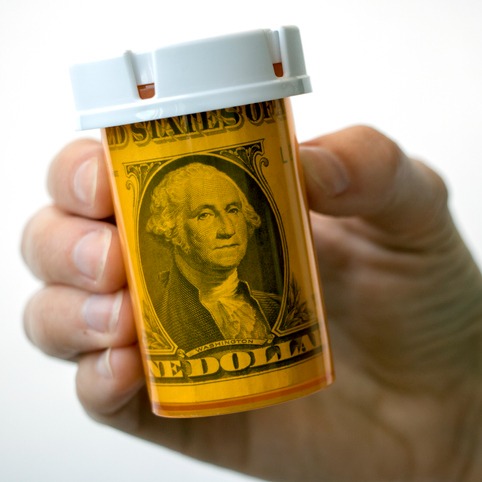
The United States Senate Committee on Health, Education, Labor, and Pensions (HELP) is addressing high prescription drug prices in the US. The Democratic HELP members, led by Chairman Bernie Sanders, invited the chief executive officers of Johnson & Johnson, Merck, and Bristol Myers Squibb to testify at an upcoming hearing on January 25, 2024. This hearing aims to explore the reasons behind the relatively high prices of prescription medications in the United States compared to other nations, highlighting the need for affordability and accountability in the pharmaceutical industry.
The Issue
Medication prices are significantly higher in the US than in Canada, France, the U.K., and Germany.
Examples include Merck's Januvia, a medication for type 2 diabetes. Januvia costs $6,000 in the US compared to $900 in Canada and $200 in France.
Johnson & Johnson's Imbruvica is a monoclonal antibody used to treat adults with chronic lymphocytic lymphoma. Imbruvica costs $204,000 in the US, compared to $46,000 in the U.K. and $43,000 in Germany.
Bristol Myers Squibb's Eliquis is a blood thinner used to prevent clots in adults with atrial fibrillation. Eliquis costs $6,700 in the US, while in Canada, it is priced at $900 and in France at $650.
Why Are Medications More Expensive in the US than Elsewhere?
The cost of any product or service is influenced by both its price and usage, and this principle extends to prescription medications. However, obtaining and comparing data on prescription medication usage across countries is challenging. Survey data indicate that in the US, a significant proportion (58%) of individuals report regular or ongoing use of prescription medications, a figure comparable to the average share in similar countries (51%).
Nevertheless, these data fail to capture the average dosage of prescription medications in the US compared to other nations. The available information suggests that disparities in the number of individuals using medicine or the volume of prescriptions may not entirely explain the high expenditure on prescription medications.
Nearly all countries except the US implement policies to reduce medication prices. These include measures like price controls, regulations that cap medication profitability, reference pricing, and the use of cost-effectiveness thresholds. For instance, in the U.K., the National Health Service is the primary buyer of medications and often excludes treatments that exceed a cost of $50,000 per year for each quality-adjusted life-year gained.
In the US, medications lacking competitors may be more expensive than in other countries due to the absence of direct regulation or negotiation of medication prices. However, when generics or biosimilars enter the market, they provide patients and payers with more affordable treatment choices.
Using generic medications instead of brand-name medications can lower healthcare expenses. However, comparing the international portion of generic medicines within the prescription market faces challenges due to varying data collection methods. For instance, while the US and most countries measure the "share of dispensed prescriptions" based on prescription numbers, some comparable nations use daily doses for assessment. Still, these data offer insights into generic medication usage and relative expenditure. Analysis reveals that although a significant majority (90%) of prescriptions in the US are for generics, their spending accounts for a smaller fraction (19.8%) of the total expenditure. While brand-name medications have generally risen, generic prices have substantially decreased.
PlanetDrugsDirect.com leverages its network of licensed and government-approved dispensaries worldwide to offer our customers in the USA the most competitive prices. PlanetDrugsDirect.com facilitates American access to international markets by delivering cost savings directly to consumers. Unlike nations with tightly regulated supply chains, America stands alone with unregulated ones. PlanetDrugsDirect.com taps into these tightly controlled global supply chains to extend your savings.
Should Big Pharma Be Less Profitable?
There is a compelling argument that pharmaceutical companies must make substantial profits to maintain the research and development pipeline.
Studies indicate that the immediate advantage of lower medication prices might be counterbalanced by the lost potential from medications that never make it to market. An estimation suggests that if the US were to enforce price controls akin to European standards, current price reductions would result in future American and European cohorts experiencing a lifespan decrease of 0.7 years due to fewer new medications. This move could cost Americans over $50,000 per person when the value of missed healthcare opportunities is considered.
These observations led to a critical economic realization. Given that the US generates a significant portion of global pharmaceutical revenues (making up 42% in 2016), it faces a unique tradeoff between innovation and accessibility, unlike other nations.
If the US were to implement price regulations like those in other countries, the impact on global pharmaceutical revenues would be substantial due to its sizable share. A 20% drop in US medication prices would directly affect global revenues, whereas a similar policy in any European nation would have a minor impact.
Lower global profits from reductions in medication prices might eventually hinder innovation, potentially making it more beneficial in the long run for Americans to pay higher prices compared to citizens in other developed nations.
However, implementing policies to lower American prices while increasing costs for other countries proves challenging, primarily because each country acts independently.
Despite the European Union's unified economic agendas and comparable size to the US, no mechanism for suitable pricing across EU countries balances the innovation-access dilemma faced privately by the US.
Acknowledging the disparity in income levels among countries, pricing policies could be flexible, allowing higher prices in nations with greater per capita income. Nevertheless, efforts among countries with similar income levels are necessary to support medical innovation. Achieving this end might involve harmonized pricing or bilateral trade agreements, and these negotiations are complicated.
The ongoing debate on medication pricing disparities between the US and other countries reflects differing viewpoints—some see price controls as a crucial means to reduce US pharmaceutical expenses. In contrast, others fear their adverse impact on innovation.
Resolving this debate hinges on acknowledging the significance of collaborative action among similarly affluent countries to balance the present affordability of medications with future access to new treatments. Presently, the method to strike this balance remains unclear. While a unified payment approach in the US may lower current medication prices, it might elevate the ‘price of health’ as the availability of future health-improving technologies diminishes. Whether society (and the US Congress) deems this a worthwhile cost remains the pivotal question.






